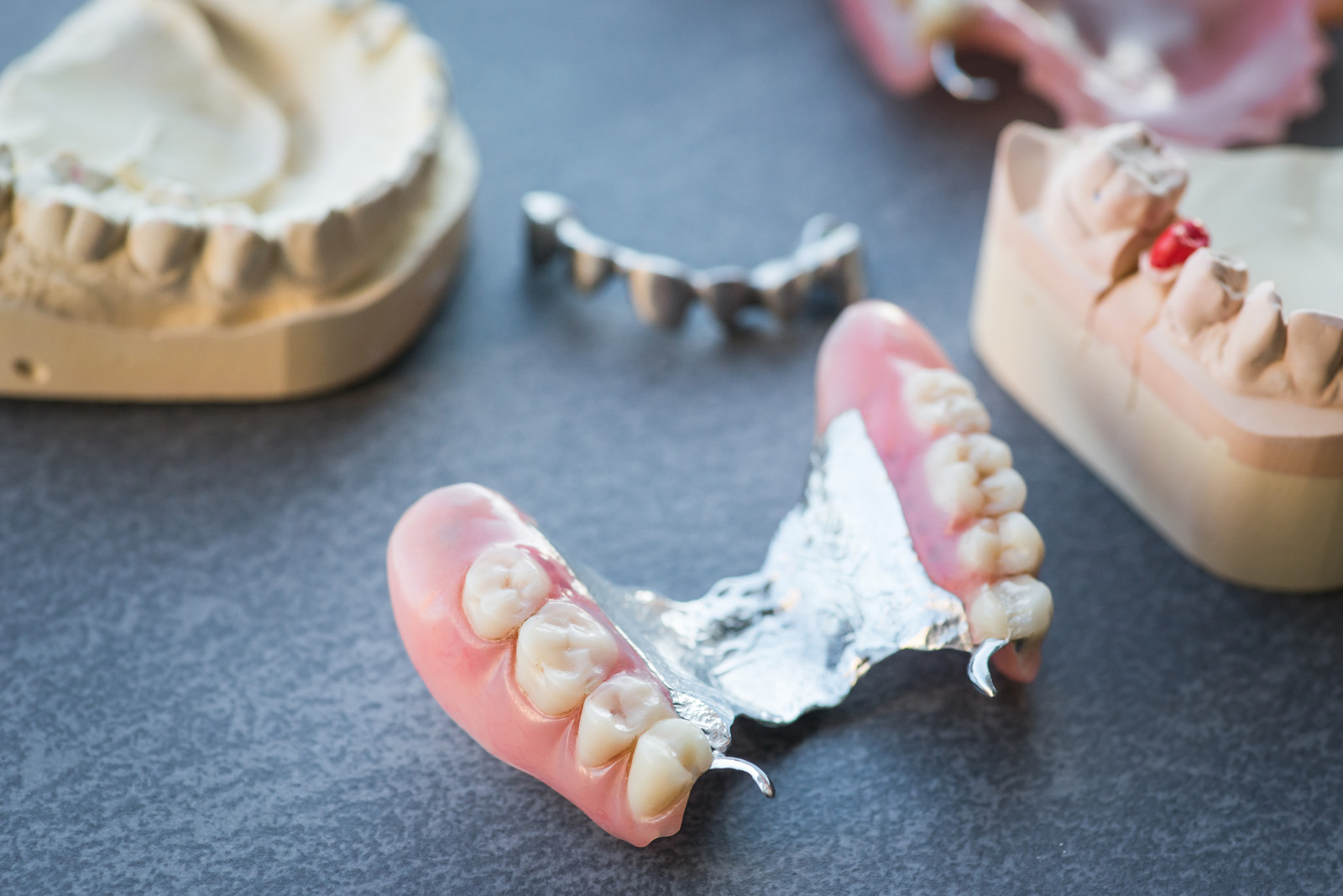Complete & Partial Dentures
If you happen to find yourself in a situation where you are missing multiple teeth, dentures may be the best option for you. Dentures can used for a few missing teeth or for patients who are missing a whole row of teeth. Dentures are removable and can appear completely natural, giving off the appearance of a complete smile. The type of dentures you need are dependent on your specific case. Review your options then talk with your dentist about what may be right for you.

Complete Dentures
Complete dentures are made for individuals who have multiple or the majority of their teeth missing in one or both rows of teeth. In the case of a patient missing most of their teeth, complete dentures may be an ideal option. In order to begin the processing, they would have to remove the remaining teeth, in order to have a complete denture set. Complete dentures can be applied to both the upper and lower teeth. Suction, and sometimes an adhesive, is used to help keep the dentures comfortably in place throughout the day.
It may take some time to grow accustomed to your dentures, however, your dentist will be able to advise you on what to expect and can put your mind at ease. Eating and speaking with your dentures may be a little difficult initially, but rest easy knowing that with a little practice, you’ll be functioning normally in no time at all.

Partial Dentures
Partial dentures are for individuals who have just a few teeth missing and would like to keep their remaining natural teeth. They are not ideal for patients who just have one tooth missing since there are a few other more ideal options such as dental crowns or implants. Partial dentures can be applied to both the upper and lower teeth. These dentures are also able to be removed from the patient’s mouth for cleaning purposes as well as sleeping.
The visible surfaces of your dentures are highly polished to appear as natural as possible. Additionally, they help prevent the build-up of bacteria on your dentures, allowing you to keep them feeling fresh and clean. Upper dentures tend to cover the roof of your mouth, while the lower denture is U-shaped to ensure there is enough room for your tongue.

How Are You Fitted for Dentures?
First, your dentist will take a mold of your remaining teeth and gums to ensure that the dentures will comfortably fit once they are made. If you are receiving complete dentures, your remaining teeth will be extracted after the mold has been taken. Be sure to follow all directions given to you by your dentist after the extraction has taken place. This ensures you can remain comfortable and pain-free while you wait for your dentures to be created. You’ll talk to your dentist about the shade, size, and shape of the teeth in detail to ensure you are comfortable with your new teeth for an extended period of time.
Finally, you’ll go through a fitting process. Chances are that when your initial set comes in, there will need to be a few adjustments needed. Your dentist can shave certain parts down and make your set of dentures more comfortable for you. You’ll likely need future adjustments as your mouth changes, but a set of dentures can last you up to 10 years if you take very good care of them.